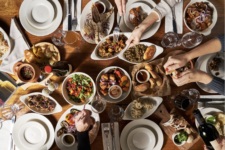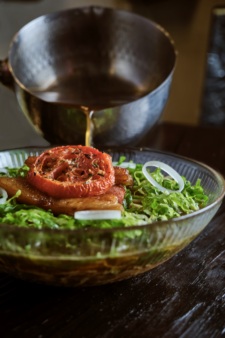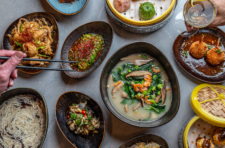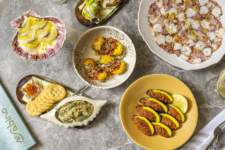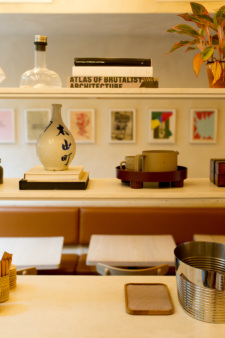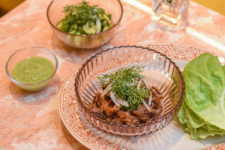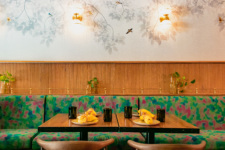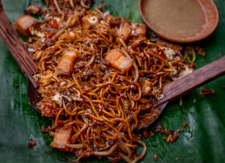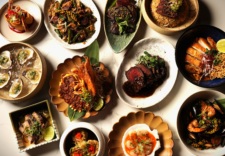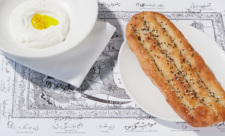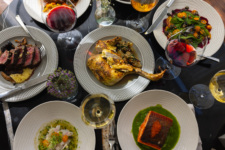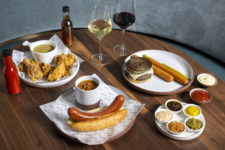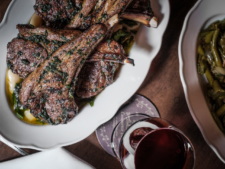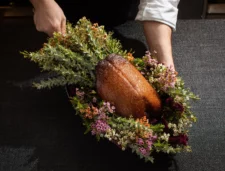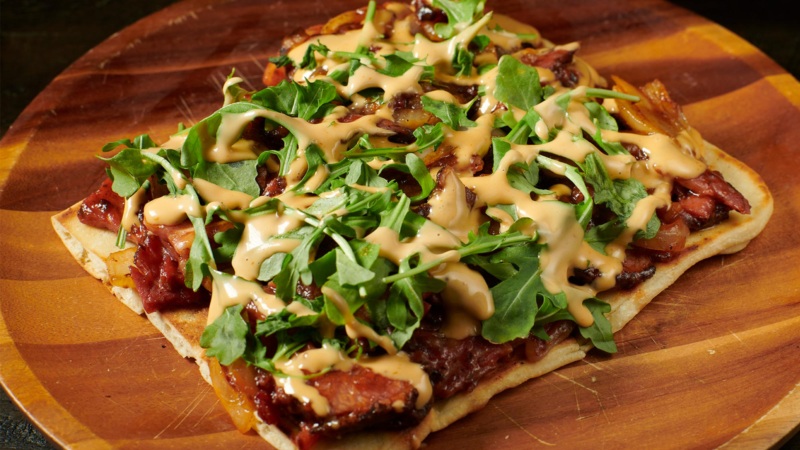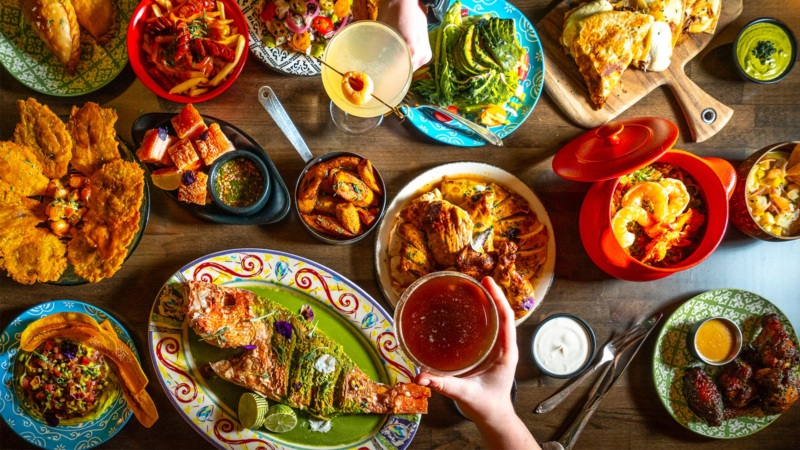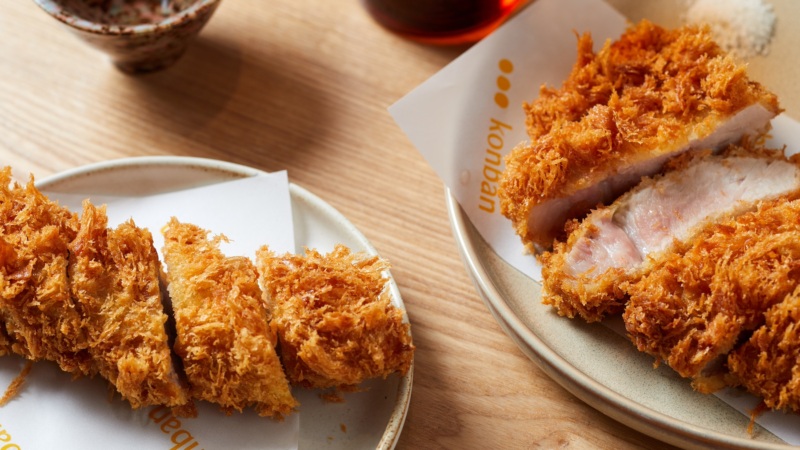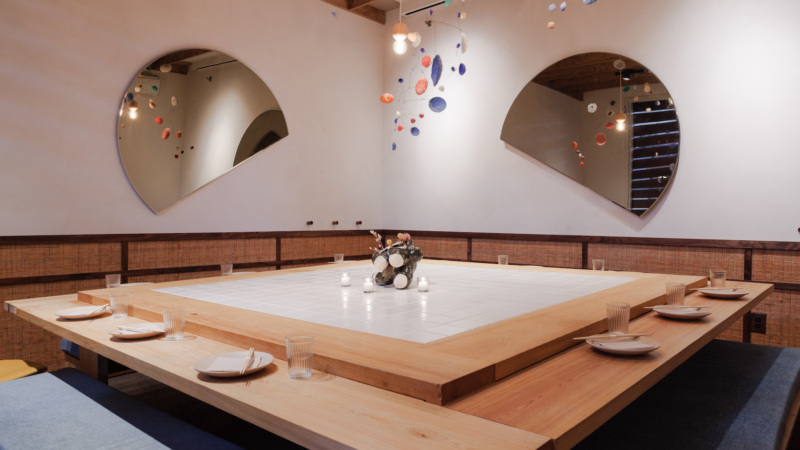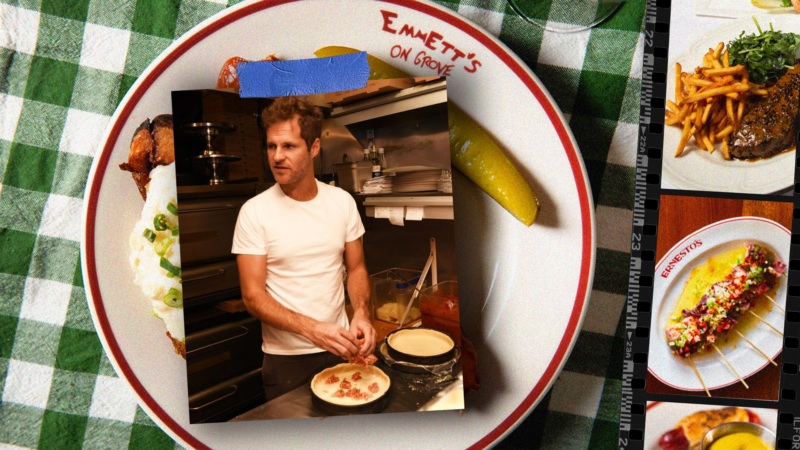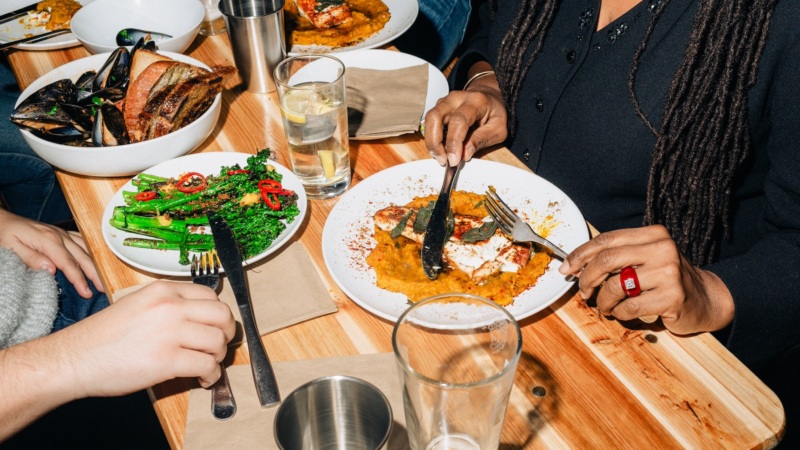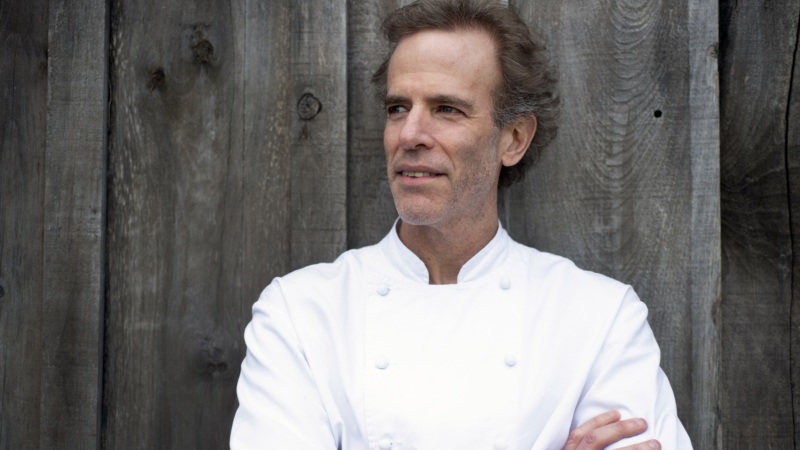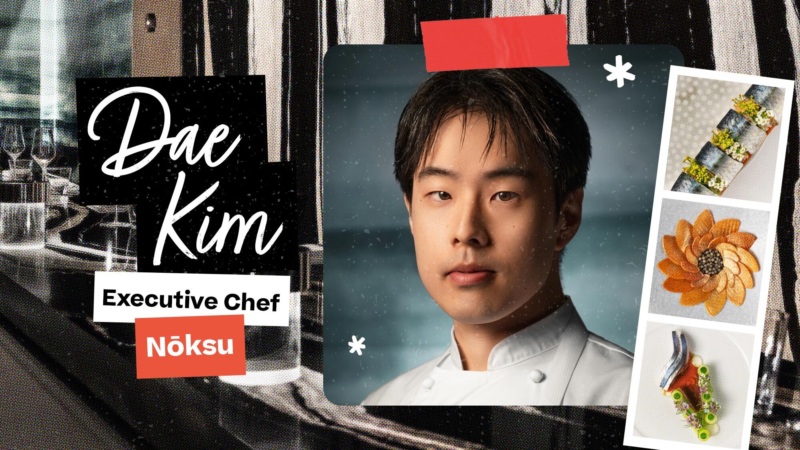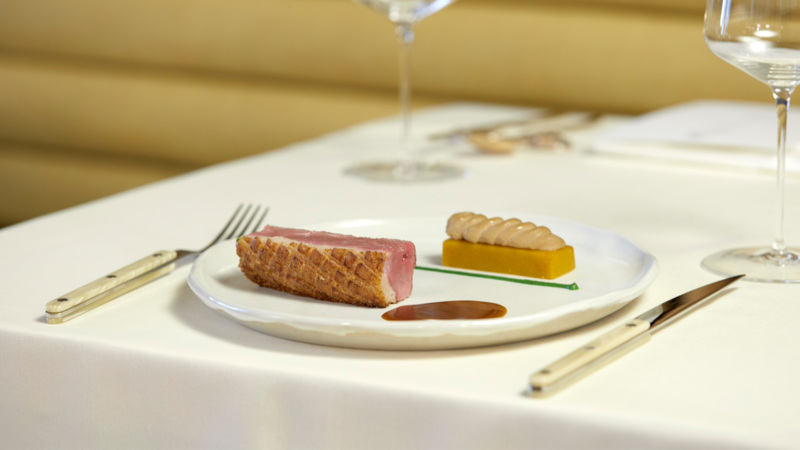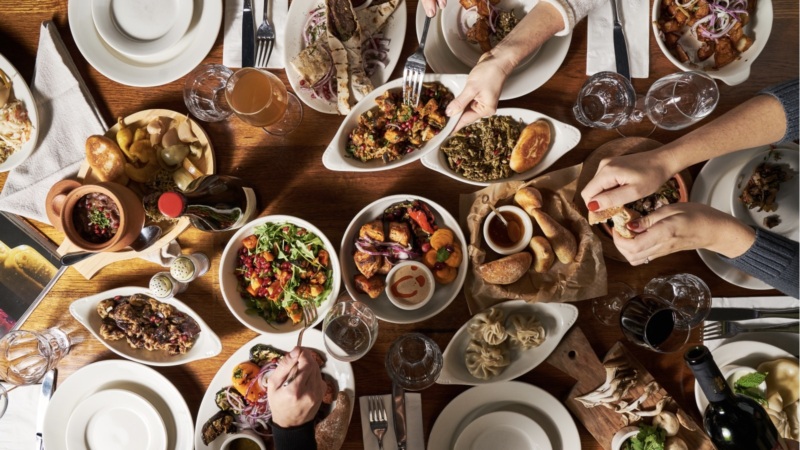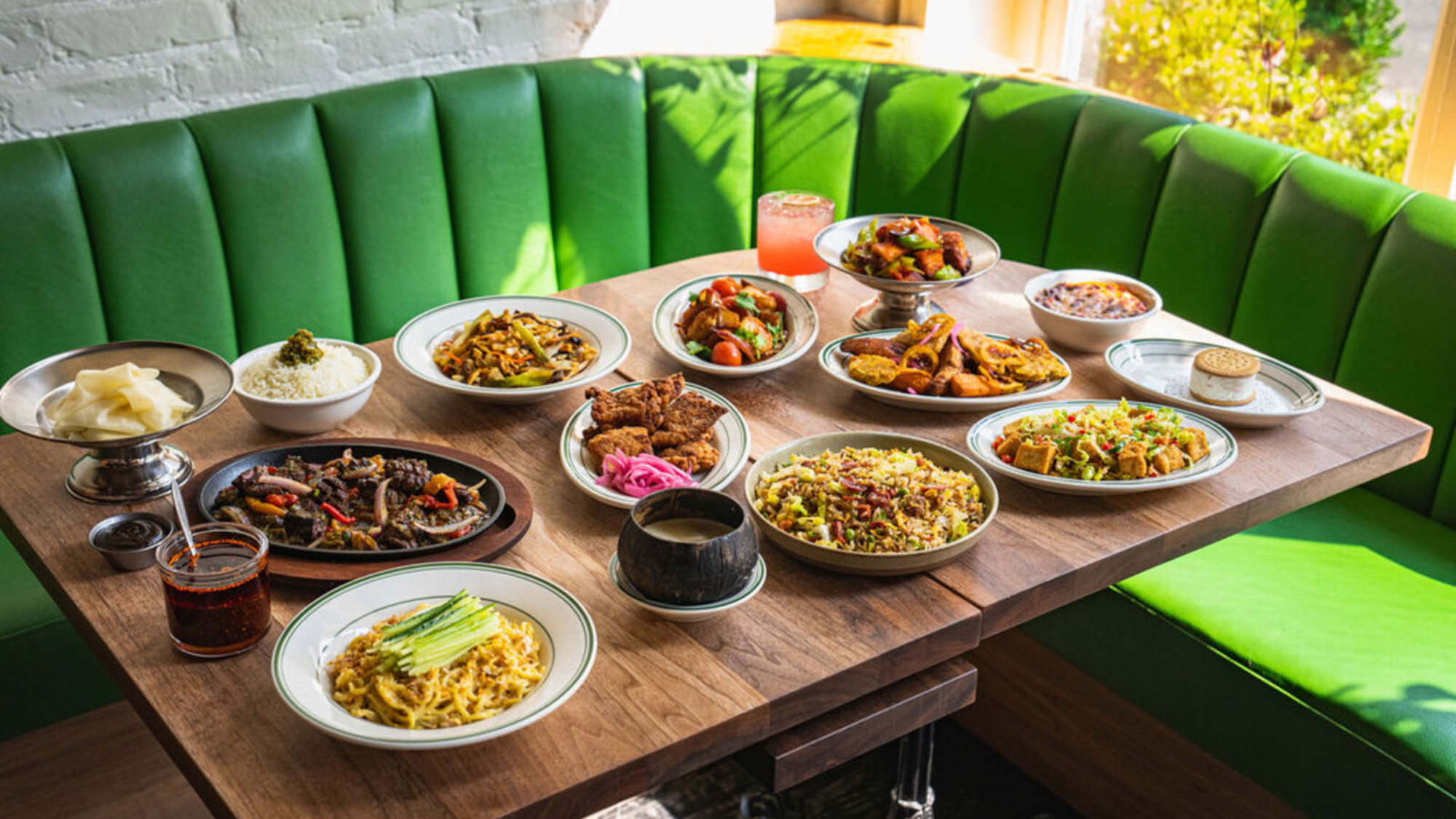
7 Essential Chino Latino Dishes at Williamsburg’s Chino Grande
Christine Lau, a Chinese American chef who grew up in Oakland, Calif., didn’t expect the menu at Chino Grande to hit so close to home.
“My food comes with a story, and I think the challenge as a chef is to be able to get to the place where you can tell the story,” she says. “I’m pretty lucky to be able to do that here. The menu is way more personal than I expected it to be.”
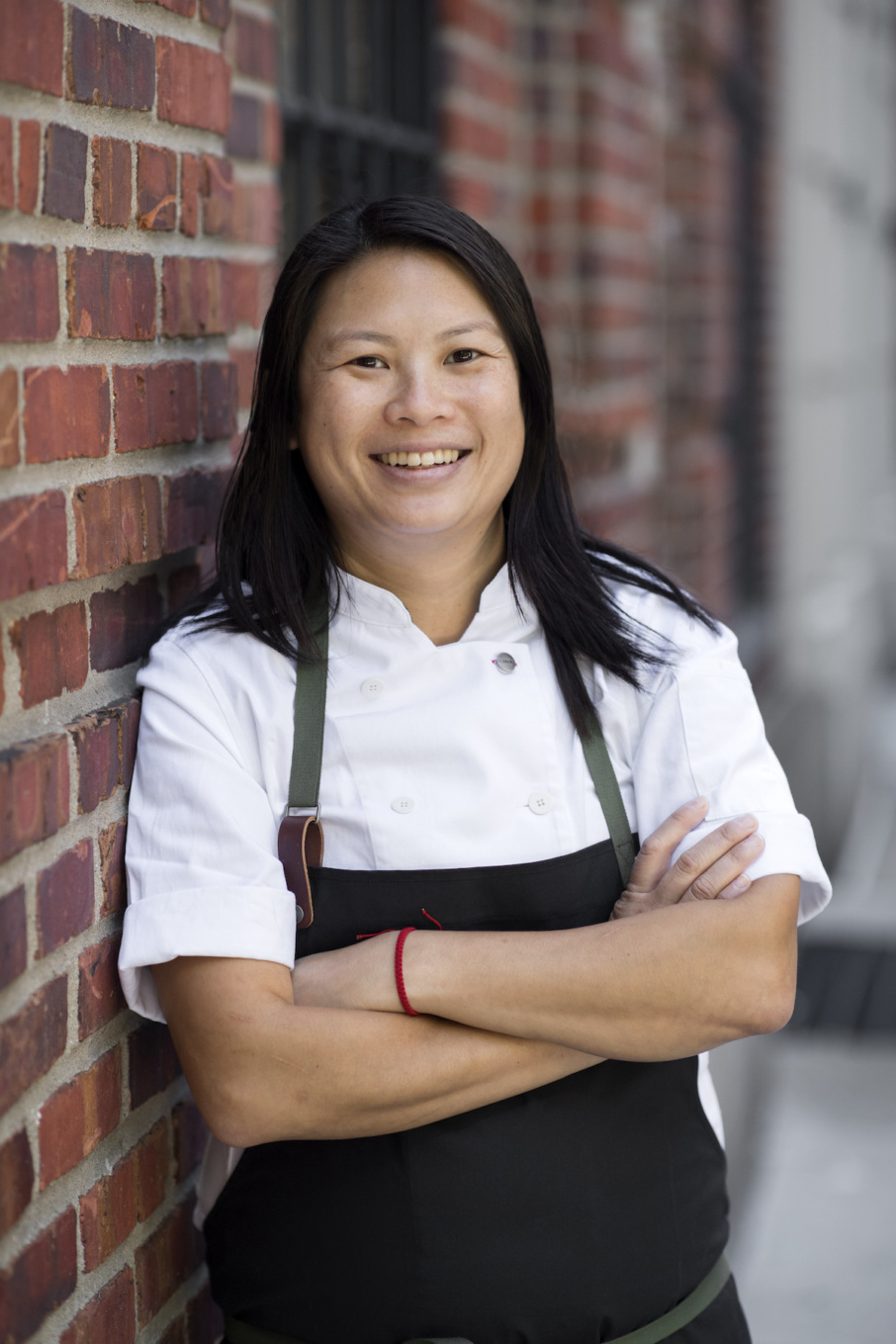
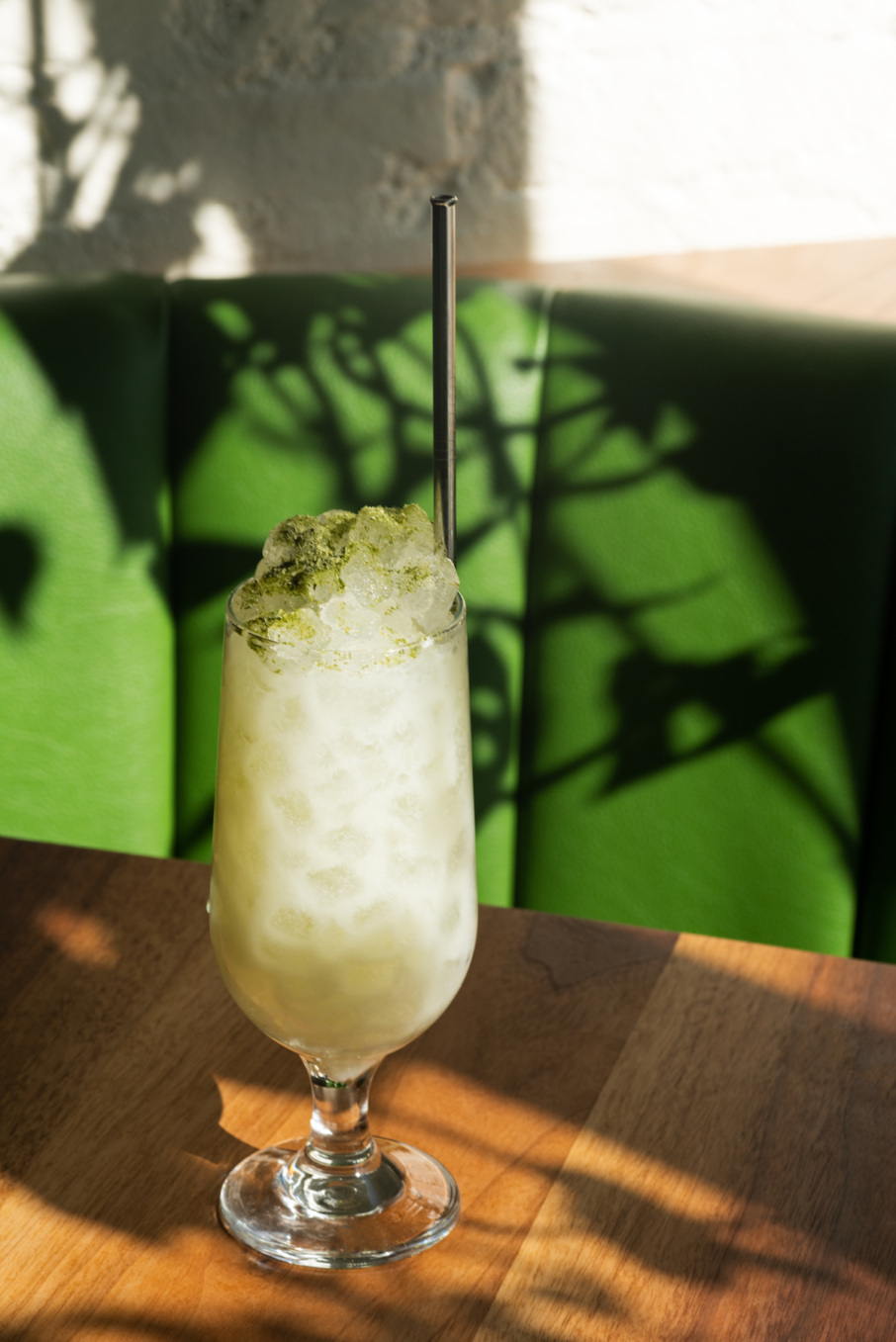
Chino Grande, from Win Son and Win Son Bakery’s Josh Ku, serves Chino Latino cuisine, a blend of Chinese and Latin foods that began with the arrival of Chinese immigrants to places like Cuba, Venezuela, and Peru, and then the United States, especially in cities like New York City and Miami. When Chino Grande initially opened in April 2022, the inaugural menu drew on Latin and Asian cuisines but wasn’t distinctly Chino Latino. But after brining Lau on as a chef in 2023, Ku decided to change the menu, going back to the cuisine he’d always originally intended for the restaurant to serve.
Lau and the rest of the Chino Grande team did plenty of research before crafting the new menu, visiting New York’s most storied Chino Latino restaurants like Flor de Mayo, La Dinastia, and Caridad China. Many of the dishes on the menu carry direct inspiration from the dishes they enjoyed most, and Chino Grande’s menu presents a distinctively New York take on the cuisine.
“Food is a great place to start a conversation, for anybody across cultures. You can find these very natural parallels, whether it’s an ingredient, a technique, or a presentation style. That’s basically what I’m trying to do through food. It sounds a little cheesy, but it’s a place to start, right?” she says.
Here, Lau takes us through seven essential dishes at Chino Grande, in her own words.


1. Chips and Sauce Caddy
Plantain, taro, sweet potato | green sauce, ketchup mayo, spicy duck sauce
“The chips are all made and fried in house, and you can get them à la carte or you can get them with the sauce caddy. It’s interesting: We don’t eat any plantains at all in Chinese food, but they show up in these Chino Latino restaurants. And then the sweet potato and the taro are these crossover ingredients that we actually use across both cultures.
“The green sauce is an aji verde, which is a Peruvian green sauce. It’s a little bit of jalapeño, scallion, cilantro, and a mayonnaise base. It’s basically the sauce that I want to drink when I go for Peruvian chicken or anything along those lines, so there’s absolutely no way that that sauce wouldn’t make it onto the caddy.
“I looked to the restaurants we’re trying to pay homage to to see what sauces they were serving and they often have this ketchup mayo, or mayo ketchup. I basically make a spicy mayo from our own aioli with Sriracha, then add ketchup and lime juice. We also make our own house adobo and sazón that we add, too.
“We make the spicy duck sauce in house. I didn’t want to just go buy the duck sauce, so I learned how to make it. It’s pickled plums, apricot preserves, a bit of soy, and a bit of rice wine vinegar. I added spicy hot mustard to give it a bit of heat at the back. It’s this two-note experience.
“The idea for the sauce caddy came when we were eating at these Chino Latino restaurants. When we were at one of the restaurants there were these guys sitting there and all they kept asking for was more sauce. Each dish really could use sauce, but we didn’t want to have 800 ramekins going around, so we tried to make the sauce caddy a focal point of the menu. I almost want you to feel like you’ve made a mistake if you don’t order it.
“The sauces are in big enough portions that you can use them throughout the whole duration of your meal. It allows you to have this agency that I really love to have in my cooking — it’s a choose your own adventure. I intended for all of these sauces to be able to be eaten with any of the dishes. We’re not offended if you use three sauces on one bite or if you never use one sauce, or if you like one more than the other. The idea is that you have this huge variety and every bite can be a different experience.”
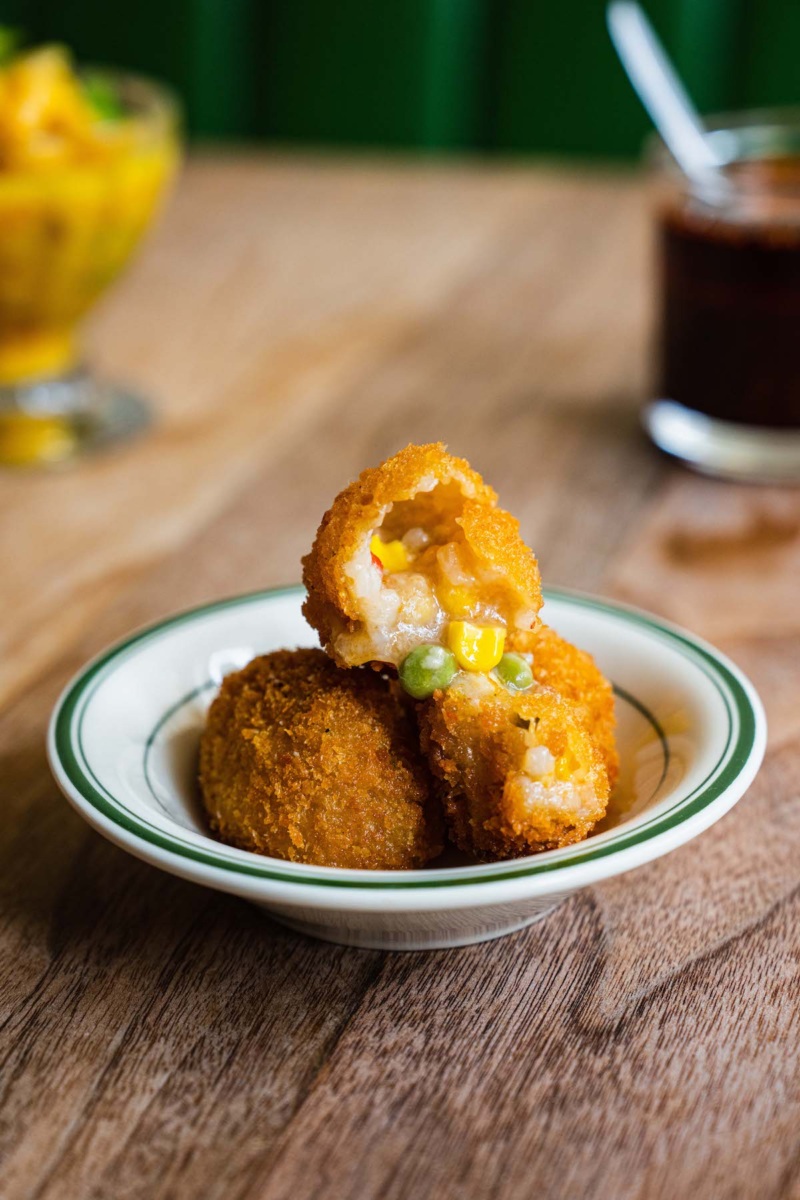

2. Asopao Congee Croquettes
“For this dish we make Hong Kong-style congee. It’s thicker and creamier; almost every East Asian culture has a different version of their rice porridge. Sometimes it’s plain and white and has nothing on it, and sometimes you eat it with pickles or something fermented. In Hong Kong, it’s really thick. It’s the equivalent of a creamy polenta or a waterier style of grits. It’s also 100% vegan here, which we did on purpose.
“It’s jasmine rice, aromatics, and our homemade red sofrito, which has garlic, onions, ginger, and red peppers, and tomato. We make it in a kombu stock or dashi, and we finish it with corn and pigeon peas. We then bread it in a vegan breading, a batter with panko, and then we fry them and season with a bit of seasoning salt. There are three to an order.
“When we were doing research and eating at Flor de Mayo, I ordered asopao, which is like the Puerto Rican national dish. Sometimes it’s similar to congee depending on who is making it or where. I’ve seen a bunch of different versions, but when I saw it on the menu there I knew I wanted to order it. It came out, and it was congee! It was basically congee cooked with peppers and tomatoes. It was my favorite thing of the entire meal, and it’s not the thing that they’re known for, or the thing that people talk about, but it stuck with me. I knew I wanted to have a version of it on the menu here.
“Then we went to another restaurant, Caridad China, that had both Spanish and English menus, and I was looking at the way they translated things. It said croquetas, and there at Caridad China, the croqueta translated back to English was the egg roll. I cooked Basque food for a year and a half, and I made a lot of croquetas, and that traditional Spanish style is super creamy. Hong Kong-style congee? Also super creamy.”
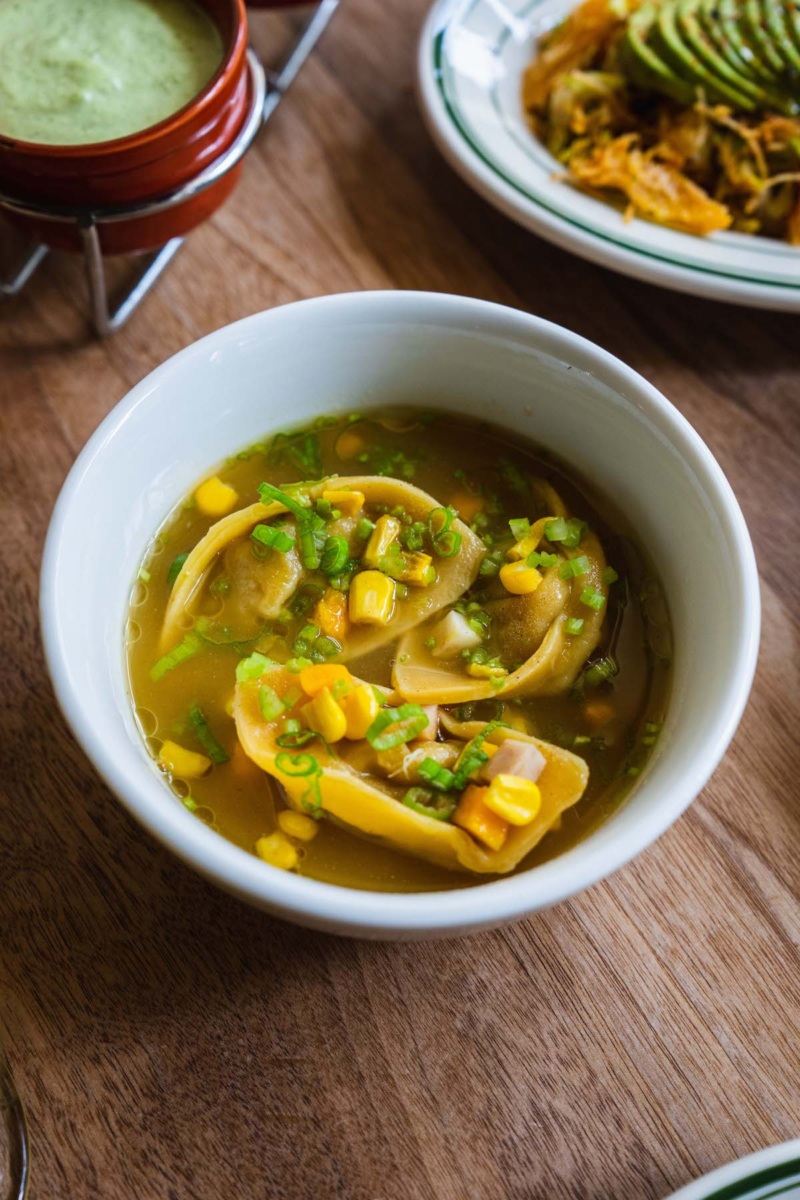

3. Pork Wonton Caldo
Root vegetables, cilantro, served with wonton crisps
“The caldo is a broth made with pork, beef, and chicken. It’s made from all of the scraps from the dishes that we have on our menu: the pork bones and beef scraps. It has carrots, onions, celery, garlic, bay leaves, all of the classic mirepoix things. We added plantains, yuca, sweet potato, and kabocha, or some sort of squash, depending on the season. We added oregano and cilantro, too. That broth is the base of the soup.
“It gets seasoned with roasted garlic, a little bit of soy, and what is basically ginger scallion oil. The wontons are made in the style of a Chinese American takeout spot with super thick, yellow skins. The filling is 100% pork, not the more traditional pork and shrimp. It’s my best version of the classic takeout dish.
“We season the meat with a lot of soy, so it gets very dark. We make the wontons inside the caldo and then add the kabocha, diced taro, and sweet potato, finishing it with corn. In any Latino-style caldo or soup there’s always that rib of corn that’s cut like a wheel, so we had to have that. We top it with scallions, cilantro, and a little bit of celery. It’s served with a cute little bag of fried wonton chips.”
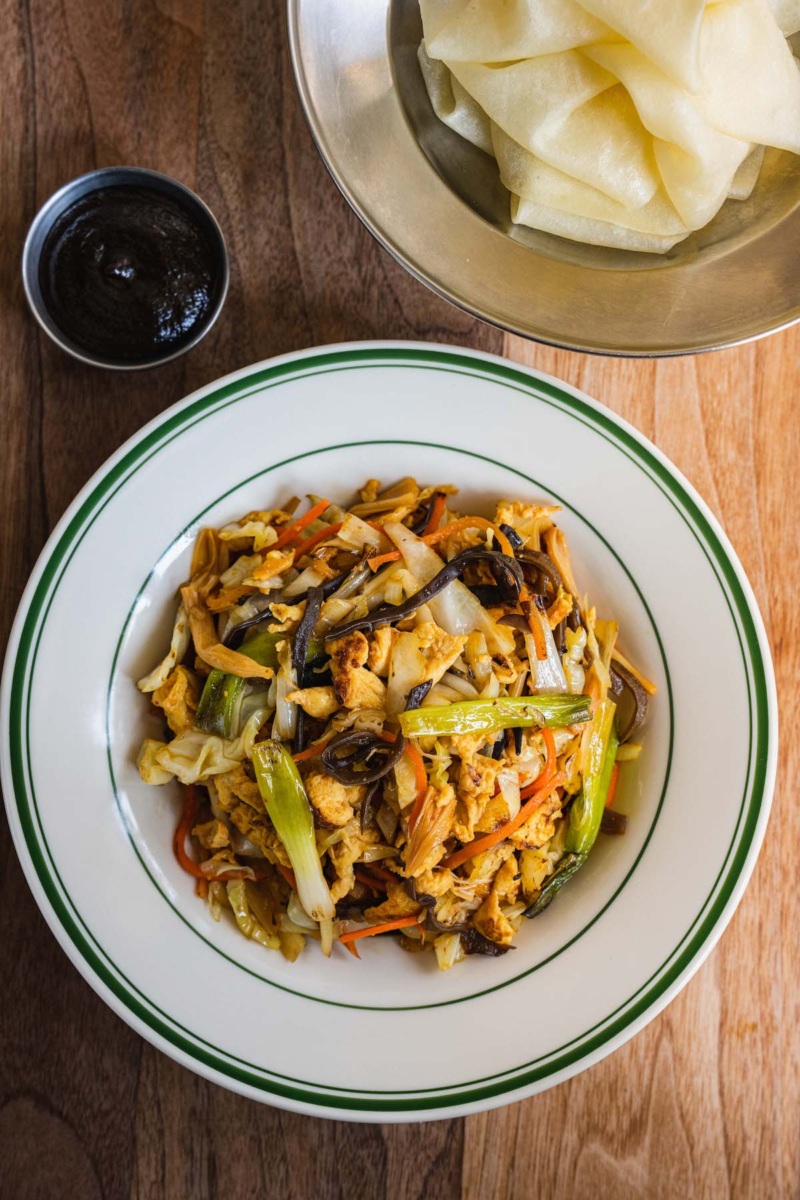

4. Hot and Sour Mushu Cabbage
Carrots, woodear, bamboo shoots, and egg, served with pancakes
“I didn’t grow up eating a lot of Chinese American food. I grew up eating at what, in the ‘80s, was called a ‘Mandarin’ restaurant. Basically, they had a Hong-Kong or Cantonese base, so they’d have potstickers, or jajangmyeon, or Peking duck. It was a mix. When I got to this world of Chinese American restaurants when I was in college, I didn’t know what to eat. I didn’t grow up eating General Tso’s, or sesame chicken. I flocked to mushu because I really liked to wrap anything in a pancake — it’s that ‘build-your-own’ aspect of it.
“I remember I was debating which soup I should put on the menu. To me, hot and sour soup is quintessential in Chinese American food. I thought about what was in hot and sour soup, and it’s tofu, it’s mushrooms, it’s bamboo, and white pepper. There’s a lot of crossover in the ingredients of mushu.
“So basically, we take all the components — cabbage, carrots, scallion, egg, bamboo shoots, woodear mushroom, and lily flowers — and it all goes into the wok and then gets cooked with hot and sour soup. The last component is the most important: the pancake.”
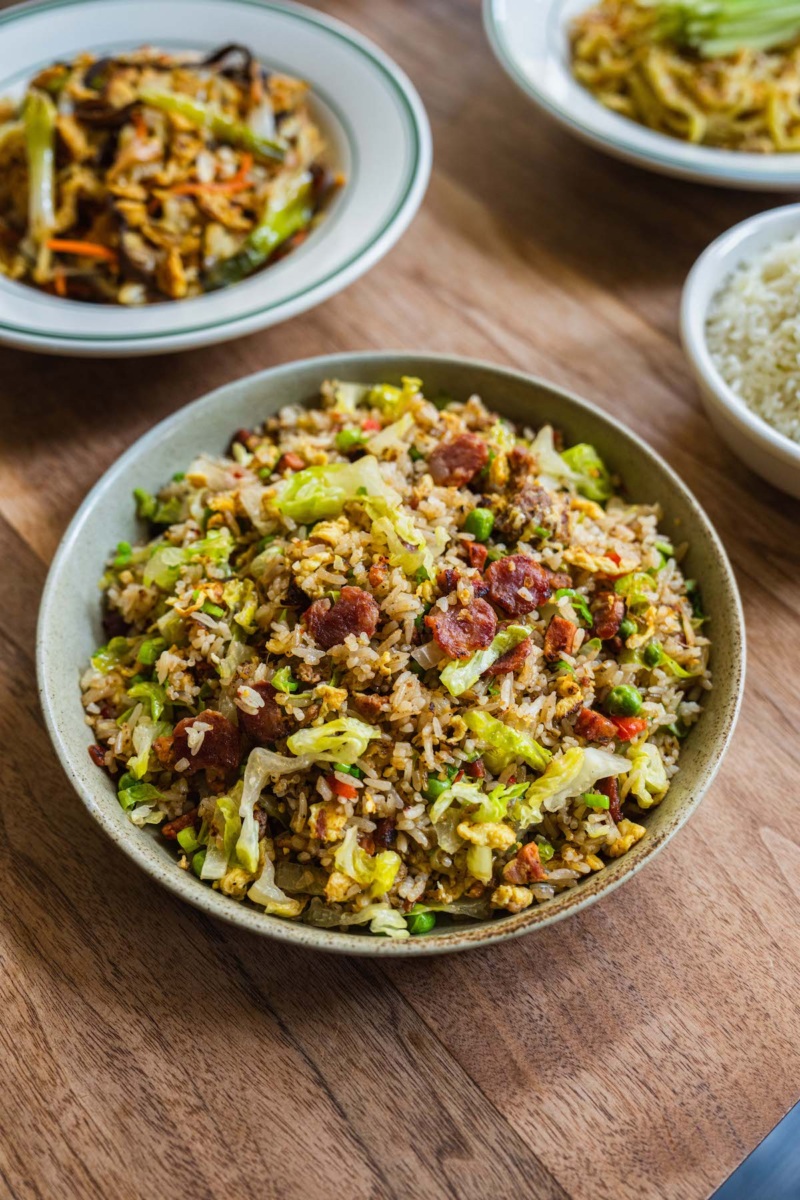

5. Salchicha Arroz Chaufa
Longaniza, lap cheong, chorizo, red peppers, and peas
“You can’t not have fried rice on the menu. The hard part was deciding what style of fried rice I was going to make. Our kitchen is smaller, and we just don’t have the capacity to do the ‘choose-your-own-protein’ style of other restaurants.
“I used to live in Astoria, and there are a handful of Chino Latino restaurants there. I used to always get Dominican salami fried rice or chorizo fried rice, because I thought it was different and fun. So I thought I wanted to do one of those, but I didn’t know which one to pick. I decided to make fried rice with three kinds of sausage. It’s chorizo made in New Jersey. Then we have a Dominican longaniza that we get from a Dominican butcher down the block that’s made in the Bronx. And then we have a Chinese- style sausage, lap cheong, and it’s a bit sweeter.
“Each one is prepared in a different texture. The longaniza is in chunks out of the casing, and the chorizo is in little pieces. The lap cheong has these little disks. It’s written on the menu as ‘salchicha arroz chaufa,’ because it’s basically Peruvian-style fried rice meets Hong Kong style.
“My favorite flavor of fried rice growing up was basically beef and lettuce fried rice. It’s finished with peas and shredded iceberg lettuce with a decent amount of white pepper. Here, we do the three sausages, the rice, and we add the sofrito we make, peppers, onions, and a bit of ginger. The seasoning is a lot of white pepper; that’s where the Hong Kong style comes in. It’s finished with shredded romaine and green peas.”
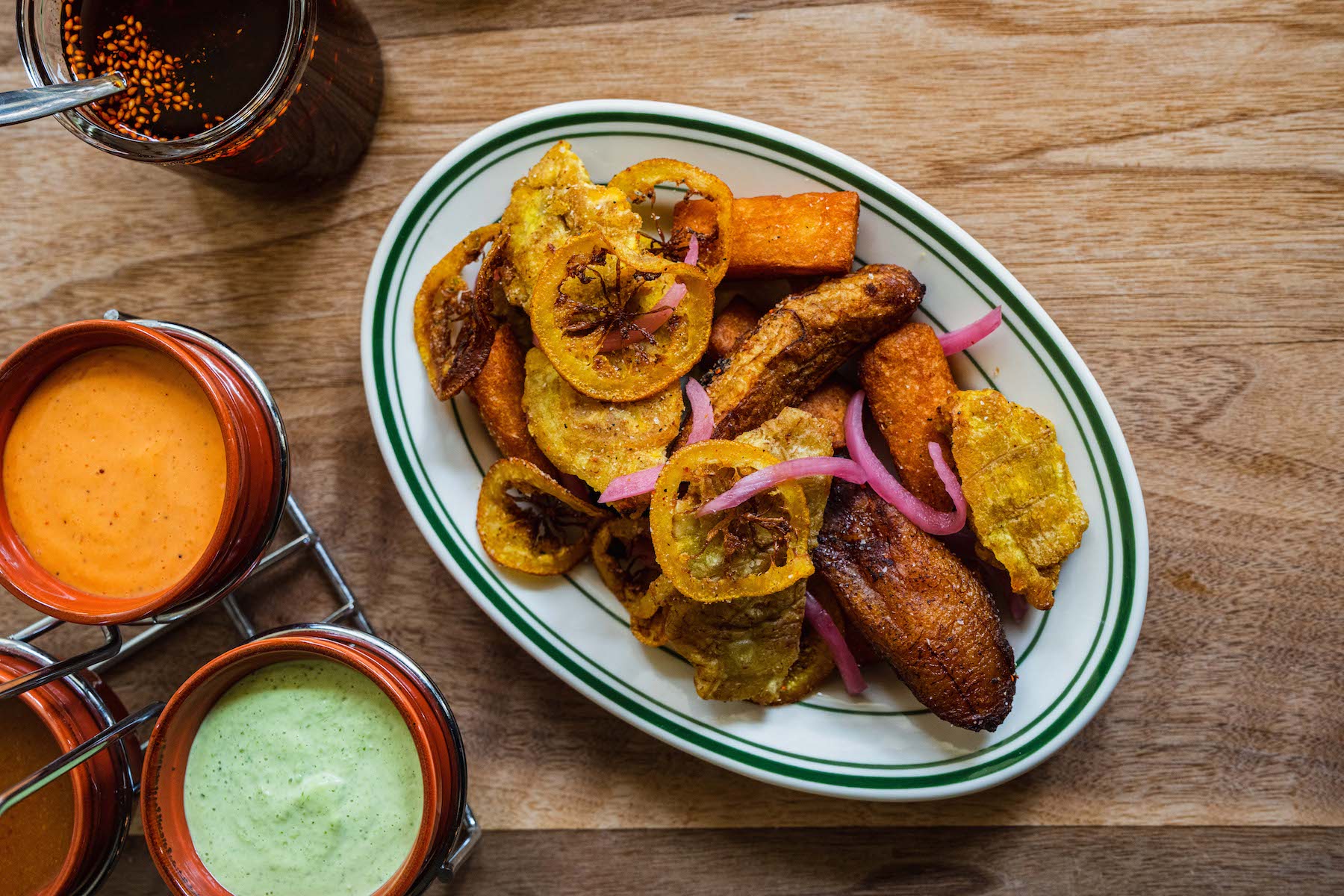

6. Frito Mixto
Tostones, yuca, and maduros
“This is like a side dish. It’s fried tostones, or plantains, maduros, and fried yuca. There are fried oranges in there and also pickled red onions.
“To me, one of the things that really defines a Chino Latino versus a Chinese restaurant is that there’s beans on the menu and plantains, maduros, or mofongo. They’re so out of the traditional Chinese world, and those are the dishes that really define this cuisine.
“I cooked Italian food for many years, and in that cuisine, frito mixto is generally calamari, shrimp, and maybe some fried anchovies. It gets served with fried lemons and a bunch of herbs. I wanted to make that a thing here. We do the mix, and I chose to do fried oranges because it was just classic Italian to me. We finish it with pickled red onions and toss it all together.”
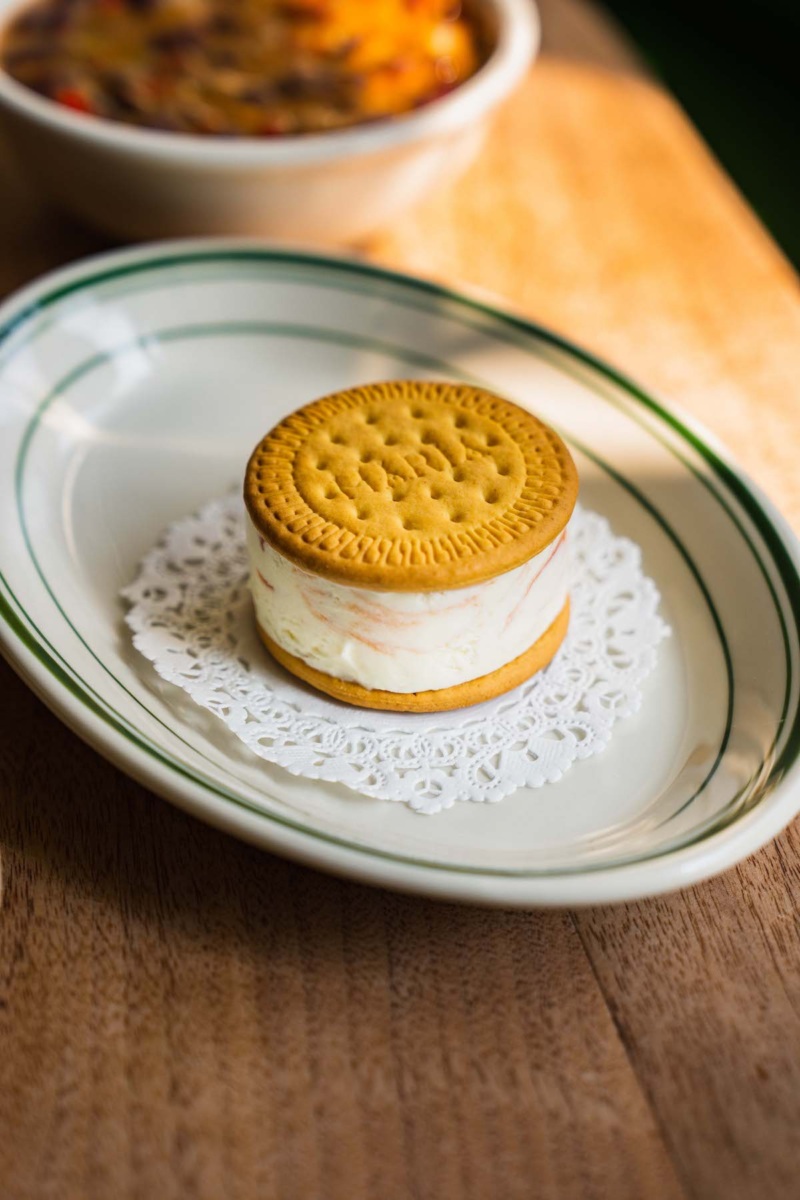

7. Ice Cream Sandwich
Maria cookies, guava, and cheese
“My ultimate goal is to get people to walk in from the block and order this cute little ice cream sandwich to eat on the way to wherever they’re going. I was thinking about the quintessential dessert at Chinese restaurants — fortune cookies. It’s fun and universal. When you get your bill, you get a tray of fortune cookies and maybe, depending on the place, you’ll get some fruit. I thought I might make a fortune cookie ice cream sandwich, but then I was talking with our staff about the essential Latin dessert, or what the fortune cookie is for them.
“I didn’t even have to wait five minutes because they all said a Maria cookie. I didn’t know what a Maria cookie was, but they’re really cute, and just the right size for you to have your own. The flavor was obvious to me: guava and cheese. We might get to the place where we have more than one flavor, but I wanted to do something like this because I really like cheesecake. Guava is also one of those fruits that really crosses over cultures as well. It’s got a tang to it and it’s so refreshing.”
Chino Grande is open for dinner Wednesdays through Mondays, offering karaoke Wednesdays through Saturdays until 1 or 2 a.m.
Ellie Plass is a freelance writer based in Brooklyn. Follow her on Instagram and X (formerly Twitter). Follow Resy, too.


